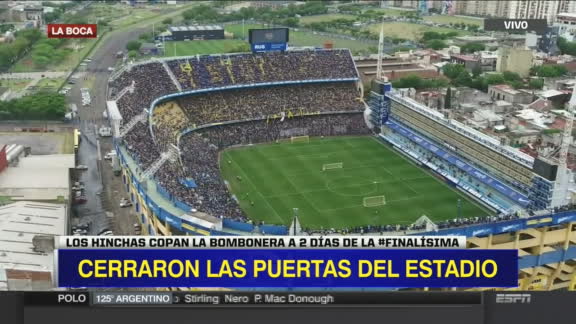Zotac geforce 9300 itx drivers for mac free. The Rio Parana in Argentina (running north-south through image center) appears brown from its sediment; it eventually drains into the Delta del Parana and the Rio de la Plata estuary. Where the Rio de la Plata empties into the Atlantic, the brown, sediment-filled river water mixes with clearer ocean water and creates swirls and cloudy formations.
Visible in this image (in gray) is Buenos Aires, the capital city of Argentina, located where the Rio Parana meets the Rio de la Plata. Montevideo, Uruguay's capital, is located on the opposite side of the Rio de la Plata. Photo courtesy of NASA.

Oct 16, 2018 - Brazil and Argentina finished their international breaks in Saudi Arabia in what turned out to be a pretty uneventful affair on Tuesday night.
For Mac I On Del Territorio Argentino
The Parana is the second longest river is South America; its delta is a huge forested marshland about 32 km (20 mi) northeast of Buenos Aires. The area is a very popular tourist destination with guided boat tours that venture into this vast labyrinth of marsh and trees. The Parana River delta is one of the world's greatest bird-watching destinations. This false color satellite image highlights the striking contrast between dense forest and wetland marshes (deep red and violet), and the winding blue ribbon of the Parana River.

The large north-south-trending water body on the right is the Uruguay River. Image courtesy of USGS. The Rio Negro in Patagonia is recognizable from space as one of the most meandering rivers in South America.
This phenomenon is well illustrated in this view, where the entire river floodplain (approximately 10 km (6 mi) wide) is covered with curved relics of channels known as meander scars. The main channel of the river, flowing south at this point 60 km (36 mi) south of the city of Choele Choel (not shown) appears in partial sun glint at right. Sun glint occurs when light is reflected off a water surface directly back towards the viewer, imparting a silvery sheen to those areas. When meander scars contain water they are known as oxbow lakes, some of which are also highlighted by sun glint in the image.
Meander scars show the numerous past positions of river bends, produced as the river snaked across the plain in the very recent geological past. The Rio Negro is a dramatic example of how mobile a river can be. The orange tint to the water in one of the oxbow lakes (center) could result from orange salt-loving algae.
Image courtesy of NASA. Buenos Aires at night. The brightness of the lights reflects the density of the urban population, which declines to blackness in the farmlands that surround the city. The brightest area is the old part of the city centered on the port and the presidential palace. The blackest part of the scene is the River Plate, the great estuary of the Atlantic Ocean on which this port city is located. The widest city thoroughfare in the world - the Avenida 9 de Julio - is the brightest line in the downtown cluster.
For Mac I On Del Territorio Argentinos
It appears as the longest north-south strip just inland of the port. Image courtesy of NASA.
In 1816, the United Provinces of the Rio Plata declared their independence from Spain. After Bolivia, Paraguay, and Uruguay went their separate ways, the area that remained became Argentina. The country's population and culture were heavily shaped by immigrants from throughout Europe, with Italy and Spain providing the largest percentage of newcomers from 1860 to 1930. Up until about the mid-20th century, much of Argentina's history was dominated by periods of internal political unrest and conflict between civilian and military factions.
After World War II, an era of Peronist populism and direct and indirect military interference in subsequent governments was followed by a military junta that took power in 1976. Democracy returned in 1983 after a failed bid to seize the Falkland Islands (Islas Malvinas) by force, and has persisted despite numerous challenges, the most formidable of which was a severe economic crisis in 2001-02 that led to violent public protests and the successive resignations of several presidents. The years 2003-15 saw Peronist rule by Nestor and Cristina FERNANDEZ de KIRCHNER, whose policies isolated Argentina and caused economic stagnation. With the election of Mauricio MACRI in November 2015, Argentina began a period of reform and international reintegration. : This entry contains the percentage shares of total land area for three different types of land use: agricultural land, forest, and other; agricultural land is further divided into arable land - land cultivated for crops like wheat, maize, and rice that are replanted after each harvest, permanent crops - land cultivated for crops like citrus, coffee, and rubber that are not replanted after each harvest, and includes land under flowering shrubs, fruit trees, nut trees, and vines, and permane... Second-largest country in South America (after Brazil); strategic location relative to sea lanes between the South Atlantic and the South Pacific Oceans (Strait of Magellan, Beagle Channel, Drake Passage); diverse geophysical landscapes range from tropical climates in the north to tundra in the far south; Cerro Aconcagua is the Western Hemisphere's tallest mountain, while Laguna del Carbon is the lowest point in the Western Hemisphere; shares Iguazu Falls, the world's largest waterfalls system, with Brazil • •.

 0 kommentar(er)
0 kommentar(er)
